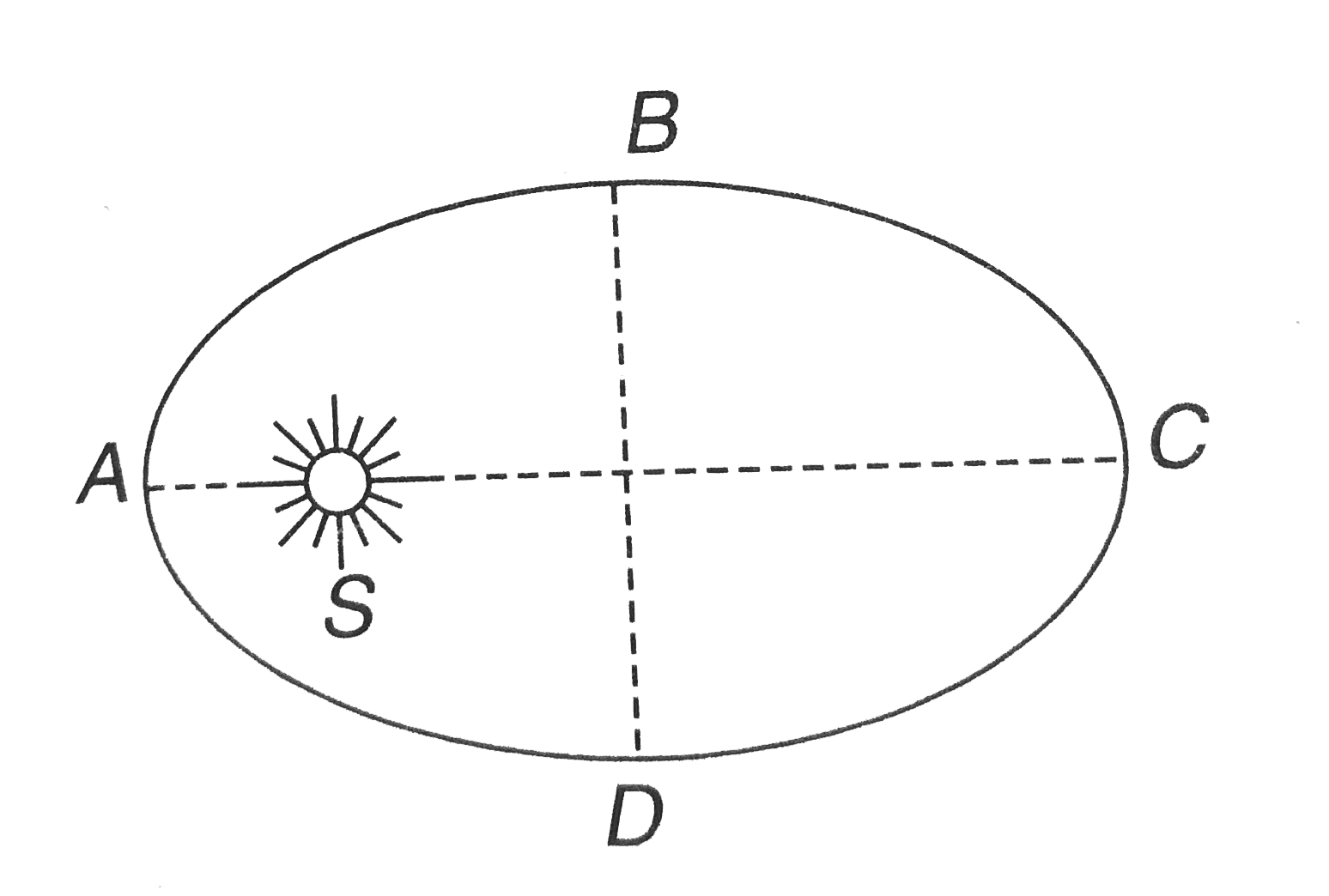A : During orbital motion of planet around the sun work done by the centripetal force is not zero at all points on the orbit .
R : Planet is revolving around the sun in elliptical orbit .
If both Assertion & Reason are true . And the reason is the correct explanation of the assertion , then mark (1)
If both Assertion & Reason are true but the reason is not the correct explanation of the assertion , then mark (2)
If Assertion is true statement but Reason is false , then mark (3)
It will move the same speed , tangentially to the spacecraft
The correct Answer is:A
To solve the question, we need to analyze both the assertion (A) and the reason (R) provided.
1. Understanding the Assertion (A):
- The assertion states that during the orbital motion of a planet around the sun, the work done by the centripetal force is not zero at all points on the orbit.
- In orbital mechanics, the centripetal force is provided by gravitational force when a planet revolves around the sun.
2. Understanding the Reason (R):
- The reason states that the planet is revolving around the sun in an elliptical orbit.
- According to Kepler's laws of planetary motion, planets move in elliptical orbits with the sun at one of the foci.
3. Analyzing the Work Done by the Centripetal Force:
- Work done by a force is given by the formula:
W=F⋅d⋅cos(θ)
where F is the force, d is the displacement, and θ is the angle between the force and the displacement vector.
- In a circular orbit, the gravitational force (acting as centripetal force) is always directed towards the center, and the displacement is tangential to the orbit. Hence, the angle θ is 90 degrees, making cos(90∘)=0. Therefore, the work done is zero.
- In an elliptical orbit, the angle θ can vary, and at certain points, the gravitational force does work on the planet as it moves along its path. Thus, the work done is not zero at all points.
4. Conclusion:
- Since the assertion is correct (the work done is not zero at all points in an elliptical orbit) and the reason is also correct (the planet is indeed revolving in an elliptical orbit), we can conclude that both the assertion and reason are true, and the reason correctly explains the assertion.
Final Answer:
Both the assertion (A) and the reason (R) are correct, and the reason provided correctly explains the assertion.
- The assertion states that during the orbital motion of a planet around the sun, the work done by the centripetal force is not zero at all points on the orbit.
- In orbital mechanics, the centripetal force is provided by gravitational force when a planet revolves around the sun.
- The reason states that the planet is revolving around the sun in an elliptical orbit.
- According to Kepler's laws of planetary motion, planets move in elliptical orbits with the sun at one of the foci.
- Work done by a force is given by the formula:
W=F⋅d⋅cos(θ)
where F is the force, d is the displacement, and θ is the angle between the force and the displacement vector.
- In a circular orbit, the gravitational force (acting as centripetal force) is always directed towards the center, and the displacement is tangential to the orbit. Hence, the angle θ is 90 degrees, making cos(90∘)=0. Therefore, the work done is zero.
- In an elliptical orbit, the angle θ can vary, and at certain points, the gravitational force does work on the planet as it moves along its path. Thus, the work done is not zero at all points.
- Since the assertion is correct (the work done is not zero at all points in an elliptical orbit) and the reason is also correct (the planet is indeed revolving in an elliptical orbit), we can conclude that both the assertion and reason are true, and the reason correctly explains the assertion.
Both the assertion (A) and the reason (R) are correct, and the reason provided correctly explains the assertion.
Topper's Solved these Questions
- BOOK - AAKASH INSTITUTECHAPTER - GRAVITATION EXERCISE - ASSIGNMENT SECTION - C (PREVIOUS YEARS QUESTIONS)52videos
GRAVITATION
- BOOK - AAKASH INSTITUTECHAPTER - ELECTROSTATIC POTENTIAL AND CAPACITANCE EXERCISE - ASSIGNMENT SECTION - D13videos
ELECTROSTATIC POTENTIAL AND CAPACITANCE
- BOOK - AAKASH INSTITUTECHAPTER - KINETIC THEORYEXERCISE - EXERCISE (ASSIGNMENT) SECTION - D Assertion - Reason Type Questions10videos
KINETIC THEORY
Similar Questions
Knowledge Check
- Question 1 - Select One
All the planets move around the sun in
Acircular pathBrectangular pathCelongated elliptical pathDnone of the above - Question 2 - Select One
For motiion of planets in ellipticla orbits around the sun the central force is
Athe force on the plantet along the vector joining the sun and the planetBthe force on the sun along the vector joining the sun and the other focus of the ellipseCthe force on the planet along the line joining focus of the ellipseDnone of the above - Question 3 - Select One
Orbit of a planet around a star is
Aan ellipseBa circleCa parabolaDa byperbola
The areal velocity of the planets revolving around the sun is ………….. .
View SolutionExplain why the planets in our solar system revolve around the Sun in their orbits.
View SolutionOrbit of a planet around a star is
View SolutionA planet is revolving around the sun as shown in elliptical path. The correct option is
 View Solution
View SolutionAll the planets move around the sun in an _________
View Solution

